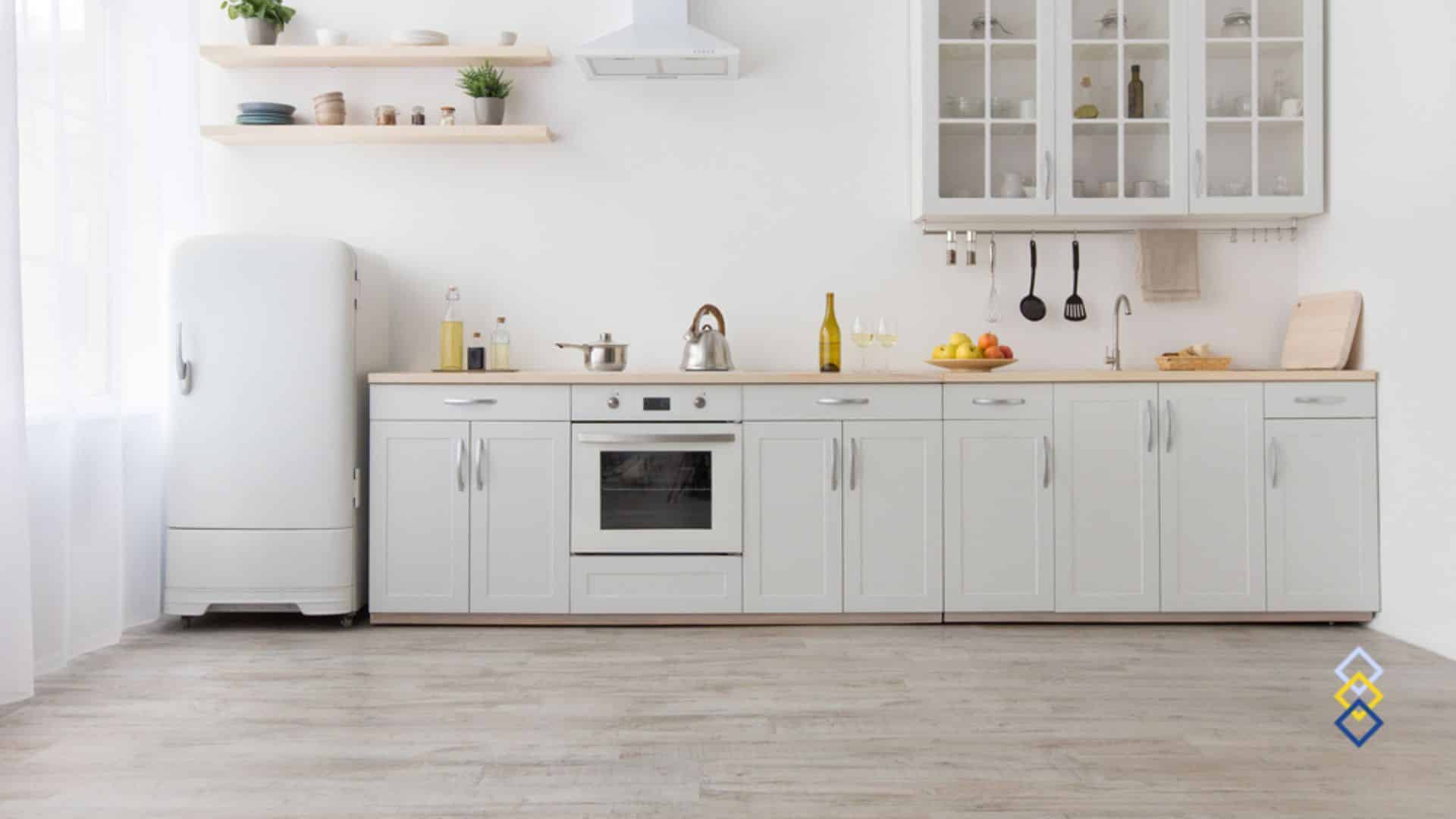Table of Contents
ToggleSo, what is the 30% rule for home renovation? This is a budgeting guideline advising homeowners to keep total renovation costs within 30% of their home’s current market value. This ceiling is meant to prevent overcapitalization—spending so much on improvements that you can’t reasonably recoup the cost when selling.
For example, if your home is worth $400,000, your renovation budget should not exceed $120,000 for all projects combined, including labor, materials, permits, and design fees. The rule balances enjoyment of upgrades with market realities, ensuring that improvements align with what buyers in your neighborhood are willing to pay.
Beyond being a spending cap, the 30% rule functions as a three-part safeguard:
- A financial guardrail to prevent budget overruns,
- A value maximizer by prioritizing high-return-on-investment projects like kitchens, bathrooms, and energy-efficient upgrades, and
- A market reality check to keep your home competitively priced.
Some professionals interpret it differently—allocating 30% of the renovation budget as a contingency fund for unforeseen costs, especially in complex projects. Whether used as a total-spend cap or contingency, the rule encourages disciplined planning, cost tracking, and prioritization of essential repairs before luxury upgrades.
By combining this framework with strategies like refurbishing instead of replacing, choosing cost-effective materials, and negotiating multiple bids, homeowners can stretch their budget, protect their home’s value, and achieve a transformation that’s both beautiful and financially sound. Let’s dive deeper into this.
Breaking Down the 30% Rule of Renovation: What It Is and Why It Works

What is the 30% rule for home renovation? The 30% rule of renovation isn’t just some made-up number contractors toss around to keep you from overspending; it’s rooted in a mix of real estate market behavior and decades of home improvement ROI data. The rule says you should avoid spending more than 30% of your home’s current market value on total renovations.
Why? Because what is the 30% rule for home renovation really about? Protecting you from overcapitalizing. It’s a fancy way of saying you’ve spent so much on improvements that you can’t reasonably expect to get it back if you sell. Even in hot markets, there’s a ceiling on what buyers will pay for a home in a given neighborhood. If you blast through that ceiling with a top-of-the-line kitchen in a mid-tier market, you risk pricing yourself out of your area’s buyer pool.
Suppose your home is valued at $400,000. Thirty percent of that amount is $120,000. That’s your total cap—not per room, not per year, but across all renovations you plan. So if you’re considering a $90,000 kitchen upgrade, you’ll have only $30,000 left for bathrooms, floors, and other improvements before reaching the limit.
Staying within that range balances your enjoyment of the upgrades with the likelihood of getting a solid return when you sell.
So, what is the 30% rule for home renovation, and why does it work?:
- It keeps your finances in check: Renovations can be deceptively expensive, and costs tend to creep as projects progress. Without a firm ceiling, it’s easy to drift into a “just one more upgrade” mindset that drains savings or forces you into costly loans. The 30% rule creates a financial guardrail, helping you avoid budget blowouts while still making meaningful improvements.
- It emphasizes high-ROI projects: Not all renovations are equal. Kitchens, bathrooms, and energy-efficiency upgrades consistently rank as the most value-adding improvements, often recouping 60–80% of their cost at resale. Conversely, highly personalized or niche upgrades—like wine cellars or luxury theater rooms—might impress guests but do little for your bottom line. Therefore, the 30% framework encourages you to focus on changes that provide real returns.
- It prevents overcapitalization: Every neighborhood has a value range, determined by comparable sales (“comps”) in the area. Overcapitalizing happens when you spend so much on renovations that your home’s price exceeds what similar properties in your neighborhood can command. Even if you find a buyer, you’re unlikely to recoup the excess investment. The 30% threshold helps you avoid falling into that trap.
- It’s flexible enough for real-world challenges: Some contractors and homeowners interpret the rule differently: instead of capping total spend at 30% of the home’s value, they reserve 30% of their renovation budget as a contingency fund for surprises. Anyone who’s opened up a wall knows that unexpected electrical, plumbing, or structural issues are common. Having that cushion can be the difference between finishing a project on time or halting it mid-way for lack of funds.
What is the 30% rule for home renovation? Well, think of the 30% rule as a three-in-one safeguard:
- Financial guardrail: Keeps spending proportional to your home’s value, so you’re not overleveraging.
- Value maximizer: Channels your budget toward projects with the highest resale impact.
- Market reality check: Aligns your home’s post-renovation value with what buyers in your area will realistically pay.
In practice, this means a homeowner with a $500,000 property isn’t spending more than $150,000 overall on renovations. Within that limit, they might allocate $80,000 for a kitchen, $40,000 for bathrooms, and $30,000 for flooring, painting, and curb appeal improvements. By sticking to the rule, they improve comfort and style without exceeding market limits.
So, the answer to what is the 30% rule for home renovation isn’t that it works as a law, it’s more of a guideline. Certain situations—such as long-term “forever homes” or luxury properties in high-demand markets—can justify spending above the limit. But for most homeowners, especially those considering resale within 5–10 years, it’s a practical, time-tested way to stay on budget and maximize ROI.
Just remember, whether you consider it a total-spend cap or a contingency cushion, the main advantage of the 30% rule is that it requires disciplined planning. It’s not about limiting your vision; it’s about planning with discipline so your investment yields returns.
Contact us here if you would like to find the best painting contractor for your residential or commercial painting needs.
How to Budget for a Home Renovation and Apply the 30% Rule (Step-by-Step)

If you’re wondering how to budget for a home renovation, start by anchoring your plan to the 30% rule of renovation. In practical terms, what is the 30% rule for home renovation? It’s a guideline advising you to keep total project costs within 30% of your home’s current market value so you stay financially safe and avoid overcapitalizing.
Step 1: Pin down your home’s current value
Get a realistic number using recent comparable sales, an online valuation tool, or a local agent/appraiser who knows your neighborhood. Your budget ceiling will be 30% of this figure. For example, if your home is valued at $400,000, your total renovation cap is about $120,000. That figure should include all costs: labor, materials, permits, and incidentals.
Step 2: Set your cap and decide your contingency approach
There are two credible ways to bake in “safety”:
- Cap-at-30% approach: Treat 30% as the hard ceiling and include a 10–20% contingency inside that cap to handle surprises like hidden water damage or code upgrades.
- Contingency-first approach (alternative): Some pros reserve 30% of the renovation budget specifically for unforeseen costs—applicable on complex projects with higher risk.
Choose the approach that matches your project complexity and risk tolerance.
Step 3: Prioritize by impact (fix, then add value)
Triage in this order:
- Essential repairs that protect the structure, safety, and function (leaks, electrical, plumbing) come first.
- High-ROI spaces include kitchens, bathrooms, and energy-efficiency upgrades that usually offer the best payback at resale.
- Personalized features last—enjoy them, but keep them proportional so you don’t overshoot neighborhood comps.
What adds the most value in a renovation? Kitchens and bathrooms consistently rank high, with sensible efficiency upgrades (insulation, windows, HVAC tuning) also strengthening value.
Step 4: Get multiple quotes and vet your team
Shortlist licensed, insured contractors with experience in your project type. Ask for references, compare several itemized bids, and make sure each aligns with your 30% cap and contingency.
Step 5: Build a line-item budget that reflects reality
Break your budget into: materials, labor, permits/inspections, design fees (if any), site prep/cleanup, and temporary housing if you’ll be out during major work. Track every expense to prevent “drift.”
As a tip, you can refurbish where possible (like, refinish or repaint cabinets, refresh walls and trim) before full replacements to stretch dollars without sacrificing the finished look.
Step 6: Sanity-check against market comps
Before you green-light, compare your planned spend to recent neighborhood sales. The 30% guideline exists to help you avoid overcapitalization—spending beyond what your market will support at resale.
Step 7: Define success and quantify it with ROI
If you plan to sell soon, focus decisions on resale value; if you’ll stay long-term, prioritize enjoyment but be clear about the return on investment. To make this clear, here’s the ROI formula for renovations; use it to compare options side by side.
ROI (%) = [(Estimated increase in home value − Project cost) ÷ Project cost] × 100
You can also compute a quick recoup rate for clarity: Recoup rate (%) = (Estimated value increase ÷ Project cost) × 100
Work with a local agent/appraiser to estimate value lift by line item (e.g., a modest kitchen update vs. a full gut), then prioritize projects that improve your ROI/recoup while fitting under the 30% cap.
Stretching Your 30%: Cost Savings That Preserve Quality
Now that you’ve answered, what is the 30% rule for home renovation, you don’t necessarily need to cut corners to control costs. Focus on smart trade-offs that maintain durability and curb appeal.
- Prioritize essentials first, then high-ROI areas. Allocate more of the budget to kitchens, bathrooms, and focusing on efficiency upgrades; delay purely aesthetic projects.
- Refurbish before replacing. Repaint cabinets and walls, refresh trim, and update hardware to transform spaces affordably. Reserve full replacements for items beyond repair.
- Choose cost-effective materials. Mid-range, durable options often provide a similar look and performance at a better value; compare suppliers for pricing and lead times.
- DIY selectively. Take on simple, non-structural tasks you can complete to a pro standard; leave complex or code-sensitive work to licensed experts.
- Get multiple bids (and negotiate.) Ask contractors for value-engineered alternatives that fit your design intent without ballooning cost.
- Track every line item. Small add-ons and change orders can quickly erode contingency; disciplined tracking maintains the 30%.
What is the 30% rule for home renovation? A plan. By grounding it in the 30% rule of renovation, focusing on what truly makes a difference, and practicing disciplined budgeting, you’ll safeguard your finances and your home’s future valuem while still achieving a transformation you’re proud of.
What is the 30% Rule for Home Renovation: FAQs

What is the 30% rule for home renovation?
Spend no more than 30% of your home’s current value on total renovations to avoid overcapitalizing.
Does the 30% cap include permits and design fees?
Yes—count labor, materials, permits, and incidentals inside the 30% ceiling.
Is there another meaning of the “30% rule”?
Some pros use it as a 30% contingency of the budget for unforeseen issues on complex projects.
How much contingency should I set if I’m not using 30%?
Many editors and pros suggest 10–15% (up to 20%) as a typical buffer.
What adds the most value in a renovation right now?
Recent data shows garage doors, steel entry doors, and manufactured stone veneer top ROI nationally.
Are kitchens and baths still good ROI?
Yes—midrange kitchen/bath updates recoup a solid share, though exterior projects often lead.
What is the ROI formula for renovations?
ROI = (Value increase − Project cost) ÷ Project cost × 100%.
How do I estimate my home’s value before budgeting?
Get a CMA from an agent or a professional appraisal based on comparable sales.
Do I need permits for my remodel?
Most structural, electrical, and plumbing work requires permits—check local rules.
Discover the Koehn Painting difference – contact us today for a free estimate and step into a vibrant, freshly painted home!




